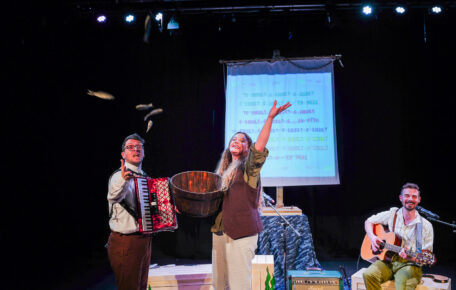
Reflection: Home is Where The Art Is
This year set off with our 'Home Is Where The Art Is - Spring 2025' season.
When I opened the doors to the Community Resilience exhibition for its private view, I wasn’t just sharing artwork, I was opening a chapter of my life. One shaped by struggle, hope, creativity, and connection. This project has been many things: a dream, a lifeline, a conversation, a provocation, but most of all, it’s been an anchor in my journey towards recovery and belonging.
From the very start, Community Resilience was never just about displaying art. It was about creating a space that invites vulnerability, celebrates difference, and honours the stories that too often go untold. As someone living with schizoaffective disorder and navigating the ever-unfolding layers of my neurodivergence, including ADHD, art has become a way of decoding the world. It allows me to process lived experience not through linearity or logic, but through texture, gesture, and intuition.
Each artwork I created for this exhibition was born in a moment of radical presence. I didn’t enter the studio with strict plans. My process is spontaneous, intuitive, a kind of visual improvisation that mirrors the unpredictability of emotion, of healing. Sometimes, I painted through tears. Other times, through laughter or long silences. I didn’t edit those moments out. Instead, I let them remain in the work, raw and real.

At the heart of the exhibition stood a sculpture that felt deeply symbolic. It wasn’t just a physical object; it was a kind of compass. It held together the themes of resilience, fragility, and transformation. Made with an exotic material (Zimbabwean Soapstone) often overlooked or discarded, it echoed something essential: that beauty doesn’t lie in perfection, but in surviving, adapting, re-emerging. For me, the sculpture became a mirror. It reflected my internal landscape, my layered identity, and my desire to reclaim space in a world that too often misunderstands neurodiversity.
It also became a point of dialogue, a place where people paused, reflected, and connected. That was the goal. Not just to be seen, but to invite others to see themselves. (oh and people where invited to touch, and feel connected to the sculpture)

None of this would have been possible without the relationships that grew from this process. One of the greatest lessons I’ve learned is that community isn’t a side note in recovery, it’s the centrepiece. Throughout the making of Community Resilience, I connected with people who not only supported the project but became part of its soul: local organisations, fellow artists, advocates, and individuals from Lincoln and beyond who shared their stories and experiences with me.
There’s a quiet magic in these exchanges. They reminded me that art doesn’t have to be a solo endeavour, it can be a shared language. Especially within neurodivergent communities, where communication often takes different forms, that sense of shared understanding, however subtle, is profoundly validating.
Some of the strongest moments came not in the gallery space itself, but in conversations that unfolded before and after the private view. People told me they felt seen, that the work gave shape to emotions they didn’t have words for. I don’t take that lightly. That connection, that mutual witnessing is the real art.

This exhibition was also a milestone in my personal recovery. Having had my studies disrupted by illness, strained relationships due to the symptoms of my illness, navigating systems that weren’t designed for someone like me, and carrying the weight of past uncertainty, I’ve often questioned whether there’s space for my voice. Community Resilience was, in many ways, my answer to that question. It’s proof that not only is there space, but that my way of seeing and being can enrich the collective narrative.
There were moments of doubt. Imposter syndrome crept in often. But every conversation, every moment of resonance, chipped away at that internal resistance. I’m learning to stand more fully in my identity as a neurodivergent artist, as a Zimbabwean-born creative who identifies as a Linconite, a Yellowbelly, as someone committed not just to inclusion but to transformation.
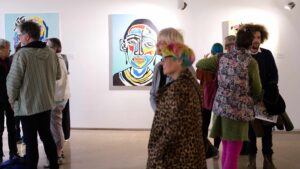
Now that the private view has passed, I find myself sitting with quiet gratitude. This wasn’t just an event, it was a turning point. It has reaffirmed my commitment to socially engaged art, to platforming voices from the margins, and to continuing the conversations that began here.
This project has opened doors, not just externally but internally. It’s taught me to trust my instincts, to lead with empathy, and to honour the messy, beautiful process of creation. It’s also reminded me that resilience isn’t about enduring alone, it’s about building together.
I’m already thinking about what comes next. Collaborations sparked through this exhibition are growing into new possibilities, new locations, artist in residence? and deeper community engagement. But wherever it leads, Community Resilience will remain a landmark in my journey. It’s where I found my footing, Its where I was truly listened to and heard. It’s where I saw that art, when made with intention and openness, can change not just spaces, but lives.
Thank you to everyone who was part of this. You didn’t just witness the work. You became part of it.
With Heartfelt Thanks
To everyone who played a role in bringing Community Resilience to life! thank you.
Community Resilience was an Arts Council Funded projected, commissioned by Lincoln Arts Centre.
We're the home to the next generation of artists and artistic ideas, and we're open to ideas.
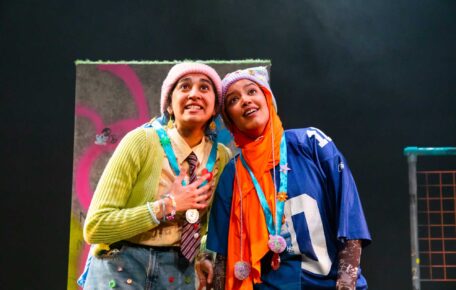
Fatima and Salima are the closest, coolest, hijabi wearing step-sisters in all of Bradford and they will win the Tiny is Mighty skateboarding competition, there is no doubt about it.
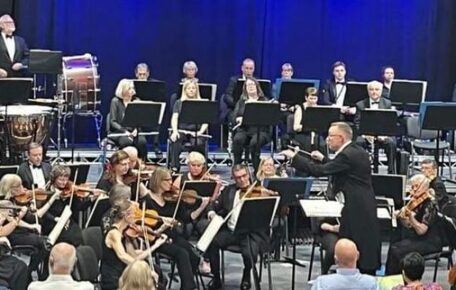
Lincoln Symphony Orchestra's Spring concert featuring Sibelius' stirring Karelia Suite and Dvorak's lyrical Symphony no. 8.
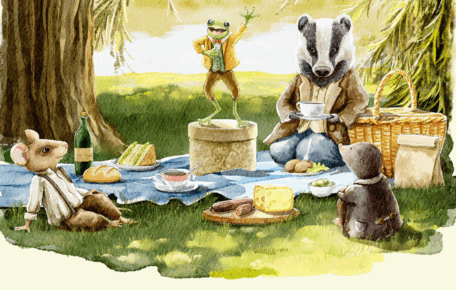
Come on down to Toadhall at Lincoln Arts Centre for your Christmas 2026 celebrations!
Stay in touch by signing up to our mailing list
Enter your details below to subscribe to our newsletter and receive exclusive offers, event announcements, projects and news